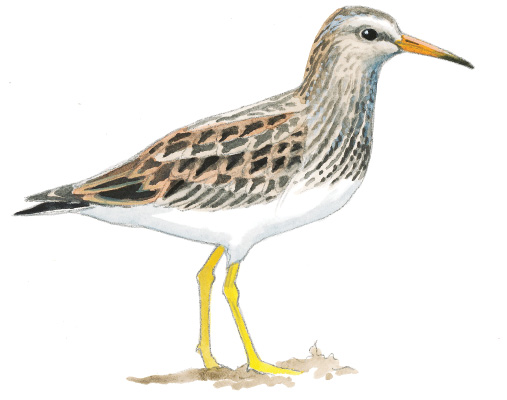
Sandpipers, Phalaropes

Pectoral Sandpiper, Calidris melanotos
Family Scolopacidae (Sandpipers, Phalaropes)
Size: 9"
Season: Spring and fall migrant
Habitat: Mudflats, grassy wetlands, marshes, shorelines
The pectoral sandpiper visits New England en route to and from breeding grounds in Alaska and northern Canada and winter grounds in South America, avoiding submerged areas in favor of exposed, weedy fields and mudflats. It is medium size with a deep chest, small head, longish neck, yellow legs, and a narrow, medium-length, straight bill that droops slightly at the tip. Breeding plumage is streaked brown, black, and tan above and on the head and neck, with dense streaking on the breast meeting abruptly with a clean, white belly. In flight a very thin wing stripe and dark central tail feathers are evident. Winter plumage is similar but paler and grayer overall. Pectoral sandpipers pick food from the surface such as insects, aquatic invertebrates, and crustaceans, and usually run to the shelter of grasses rather than fly away when alarmed. The breeding adult is illustrated.